The Taskforce on Nature-related Financial Disclosures (TNFD)
Wistron has adhered to the final recommendations of the TNFD, officially announced in September 2023, by disclosing relevant information and progressively assessing and reporting our nature-related risks, impacts, and dependencies. This allows us to gain an in-depth understanding of the potential risks of our operation on biodiversity
and take proper measures to mitigate such risks. Through TNFD's nature-related risk management and disclosure framework, Wistron continuously identifies, assesses, manages and discloses our nature-related dependencies, impacts, risks and opportunities while exploring assessment methods to comply with the global biodiversity targets. Wistron's Biodiversity Compliance and Assessment in 2023:
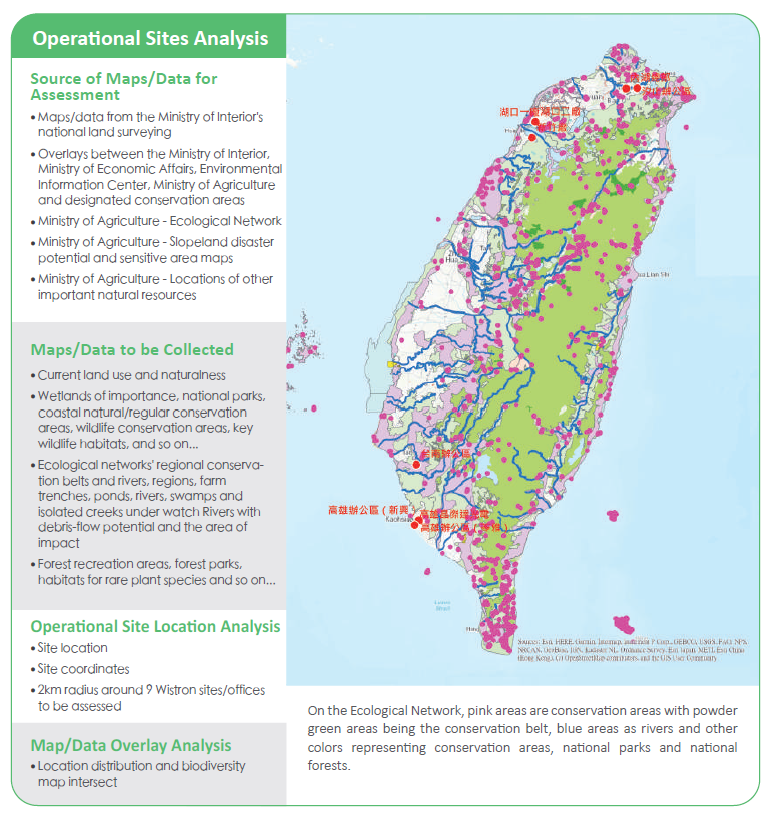
LEAP Approach Assessment Process
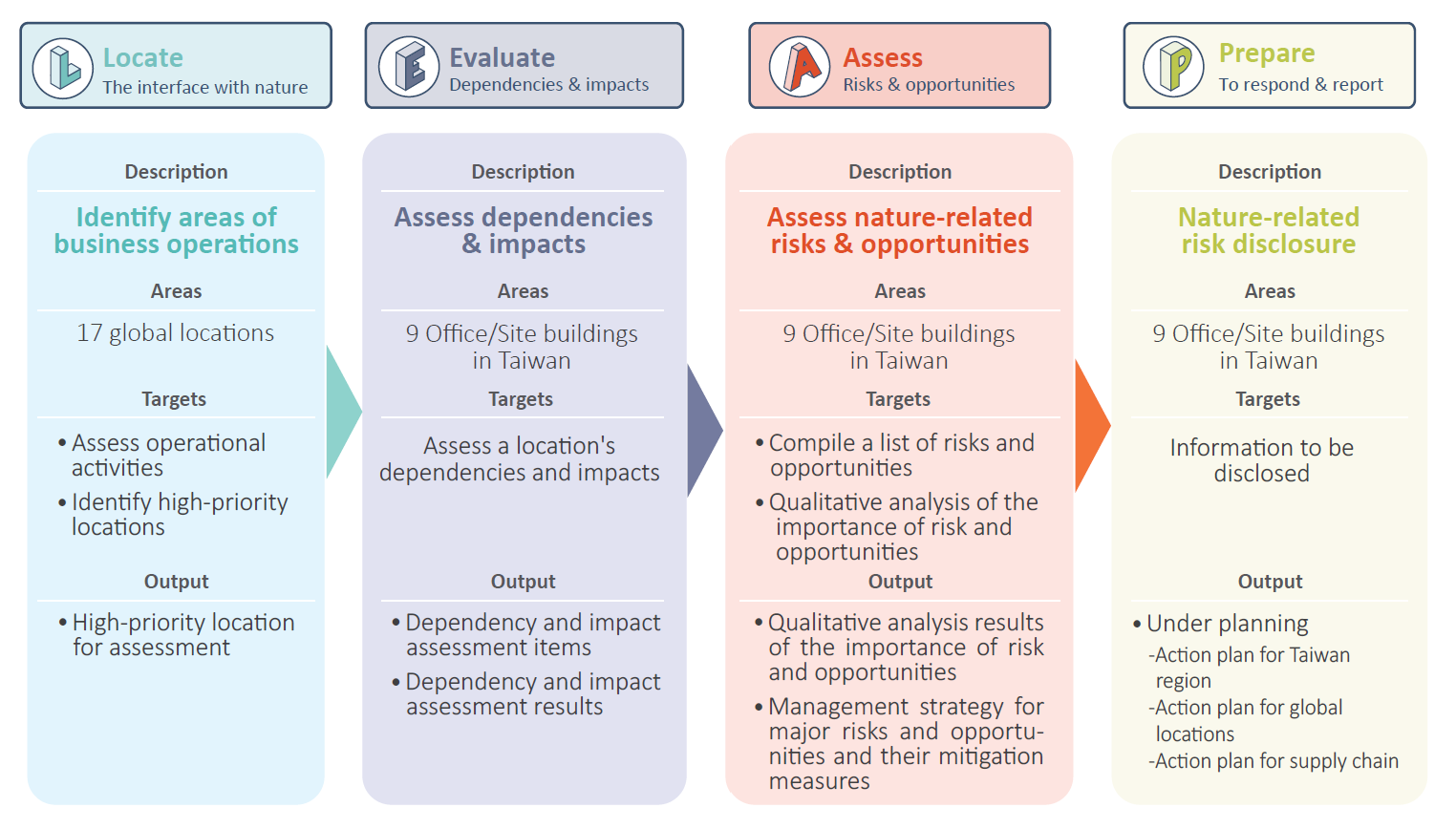
Adoption of the LEAP Approach at Wistron Offices/Locations
Impacts from natural capital (such as water) vary depending on the location or region. Therefore, targets and strategies should be formulated while considering such factors. Wistron adopts the LEAP approach in the TNFD framework in our integrated disclosures.
Climate Change (Floods, Landslides, Mudslides) Vulnerability
Business Operation
png.png)
Supply Chain
png.png)
◎ A total of 32 out of 142 locations are vulnerable to flooding.
◎ No vulnerability to landslides, no vulnerability to debris flows.
Business Operations Flooding, Landslides, and Mudslides Scenarios
Short Term
_短期.png)
Medium Term
_中期.png)
Medium and Long Term
_中長期.png)
Long Term
_長期.png)
Supply Chain flooding, landslides, and mudslides scenarios
Short Term
_短期.png)
Medium Term
_中期.png)
Medium Long Term
_中長期.png)
Long Term
_長期.png)
[Taiwan Region] Climate Change (Water Scarcity Risk)
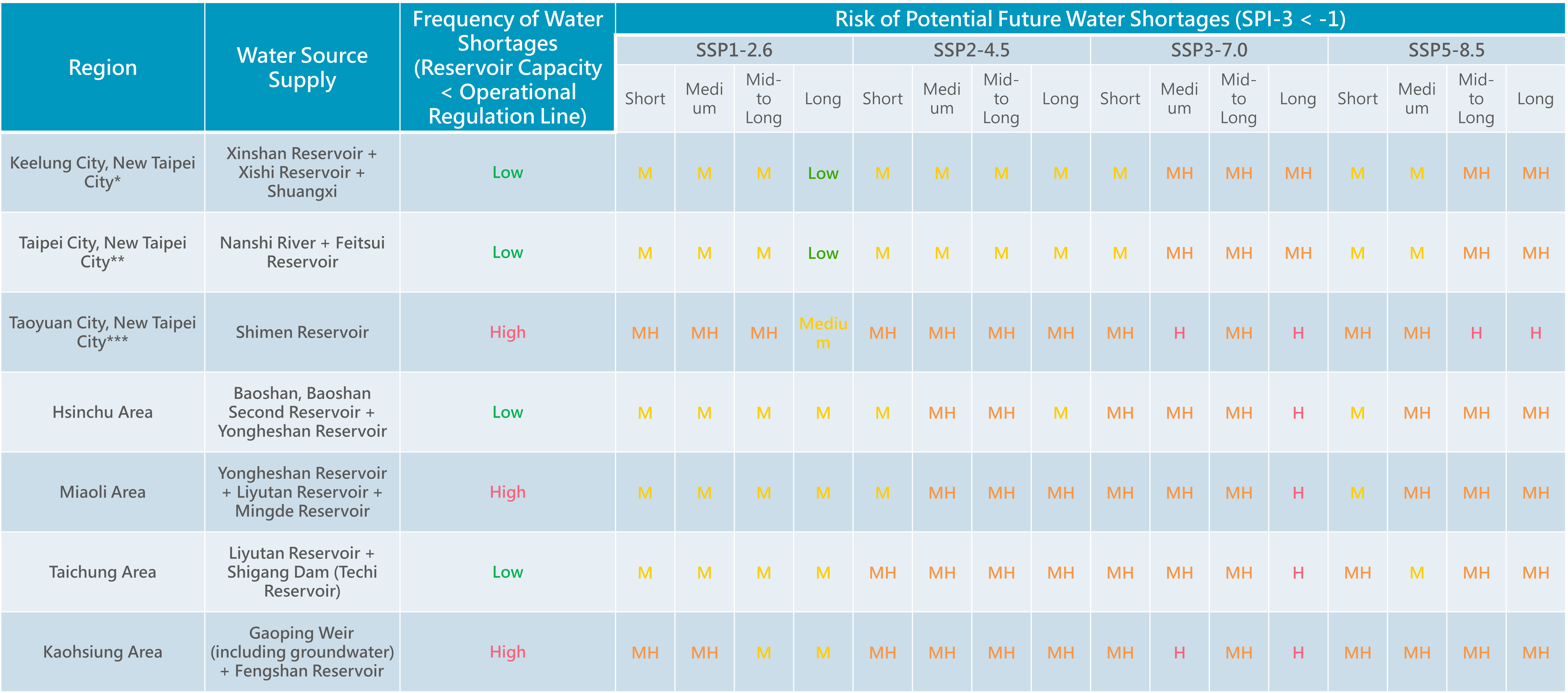
◎ High (H), Medium- High (MH), Medium (M), Low (L)
*Includes administrative districts Pinglin, Jinshan, Wanli, Ruifang, Sanzhi, Wulai, Shuangxi, Shenkeng, Shiding, Pingxi, Gongliao, and Shimen.
** Includes administrative districts Zhonghe, Banqiao, Shulin, Tucheng, Xinzhuang, Sanchong, Sanxia, Yingge, Taishan, Wugu, Luzhou, and Bali.
*** Includes Linkou District.
[Business Operations/Suppliers] Water Resource Risk
Baseline Water Stress:Total Water Withdrawal / Total Available Water
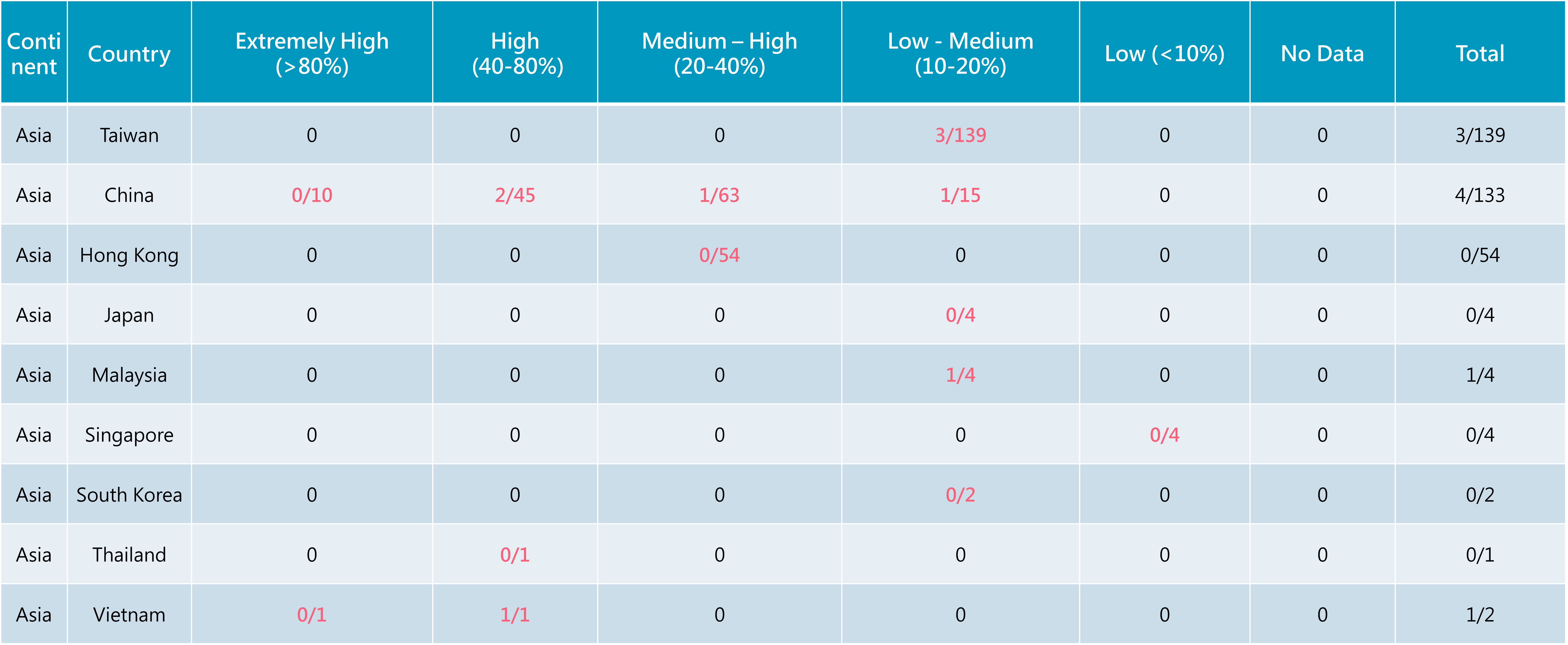
◎Higher values indicate greater water competitiveness.
Total Water Risk:Integrated scoring of the aforementioned 13 factors
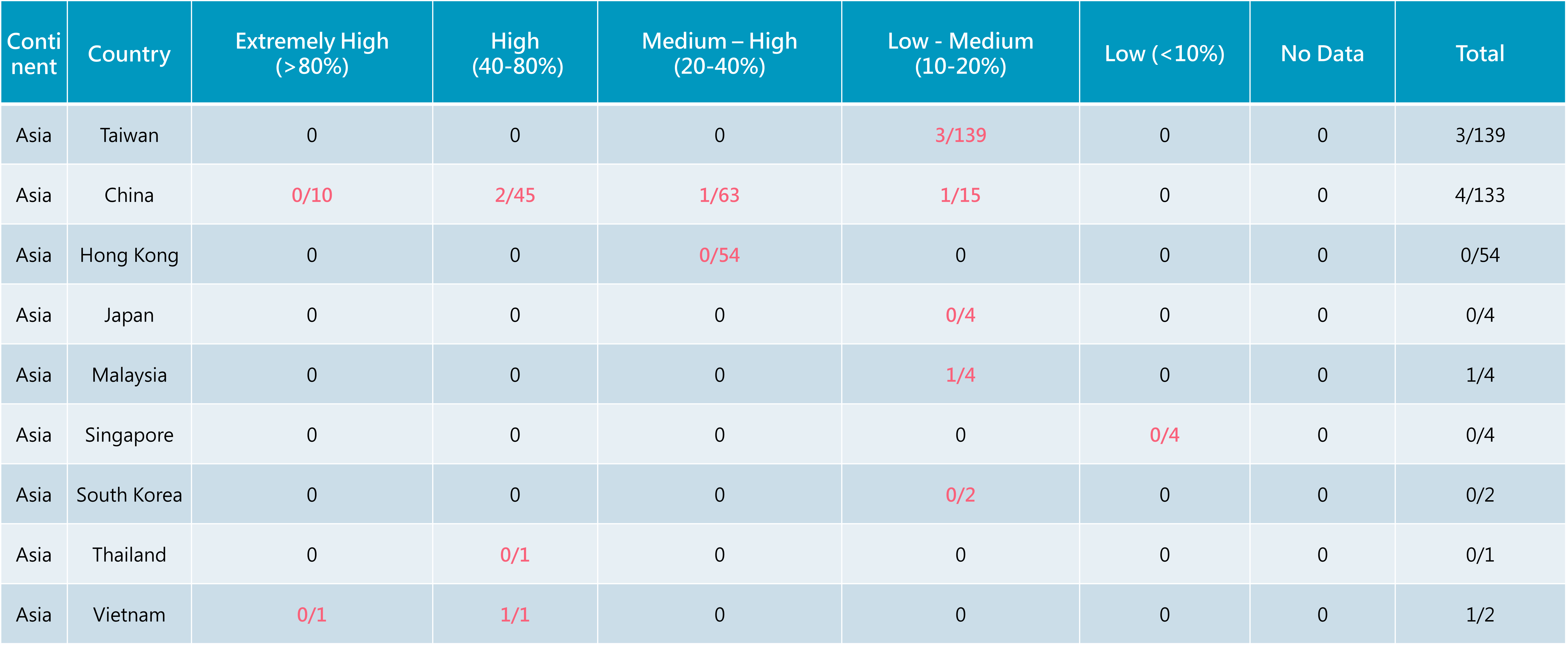
◎Higher values indicate a higher risk to water resources.
Estimation of Water Stress Levels under Climate Change
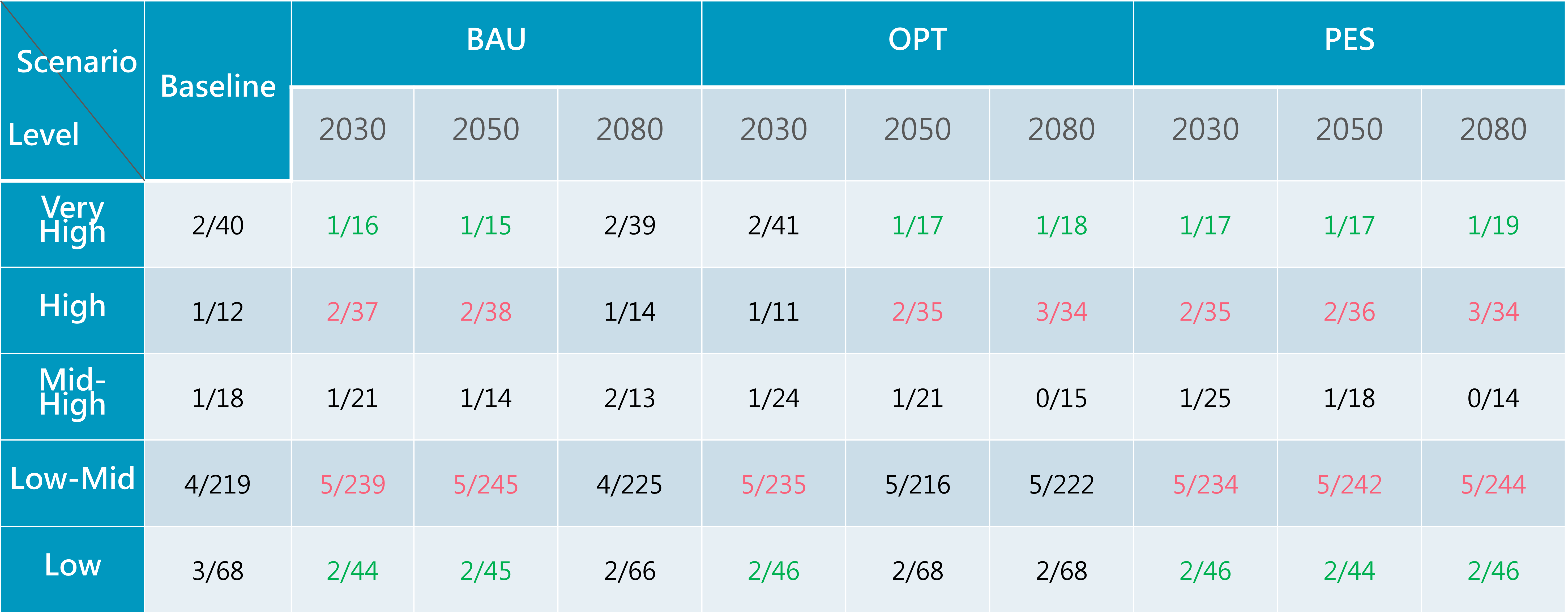
[Business Operations/Suppliers] Biodiversity Impact Assessment
[Taiwan Business Operations/Suppliers] Biodiversity Impact Assessment Analysis Report
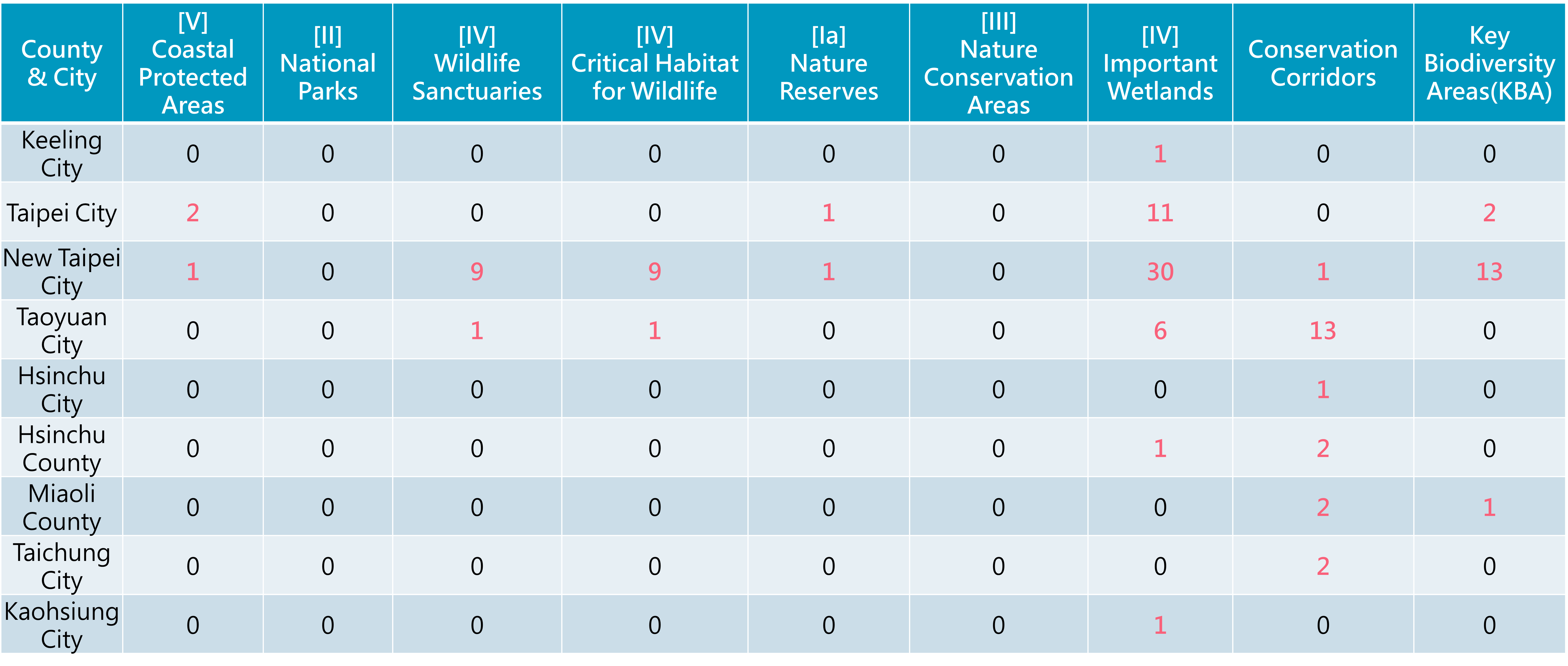
◎ Only a list of items with impact risks is provided.
◎ Wistron's business operations at Taiwan sites have no overlap with biodiversity data collection; the above numbers all refer to suppliers.
[Global Business Operations/Suppliers] Biodiversity Impact Assessment
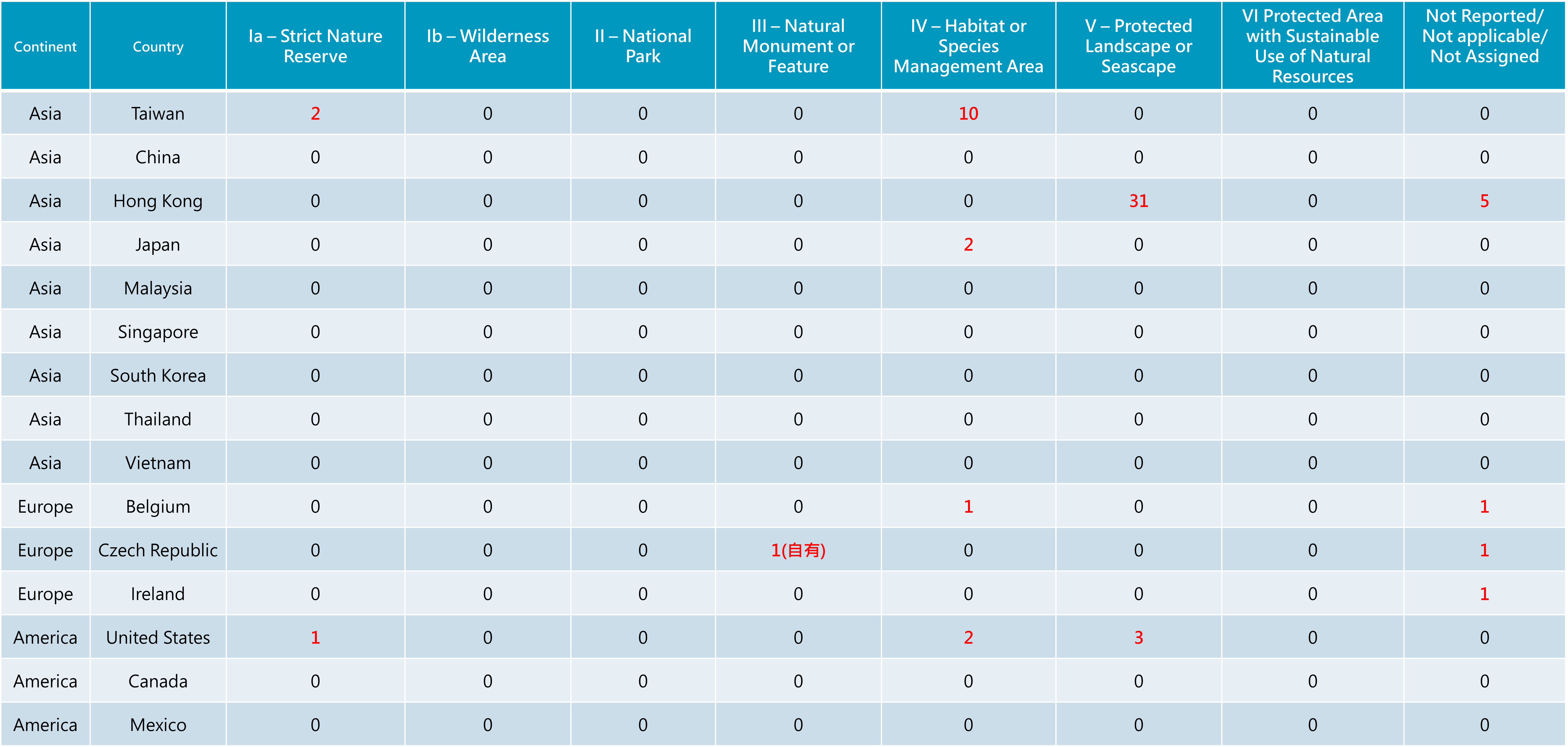
◎ Only a list of items with impact risks is provided.
◎ The Czech site is an owned asset, while the rest refer to the number of suppliers.
[Global Business Operations/Suppliers] Red List Endangered Species
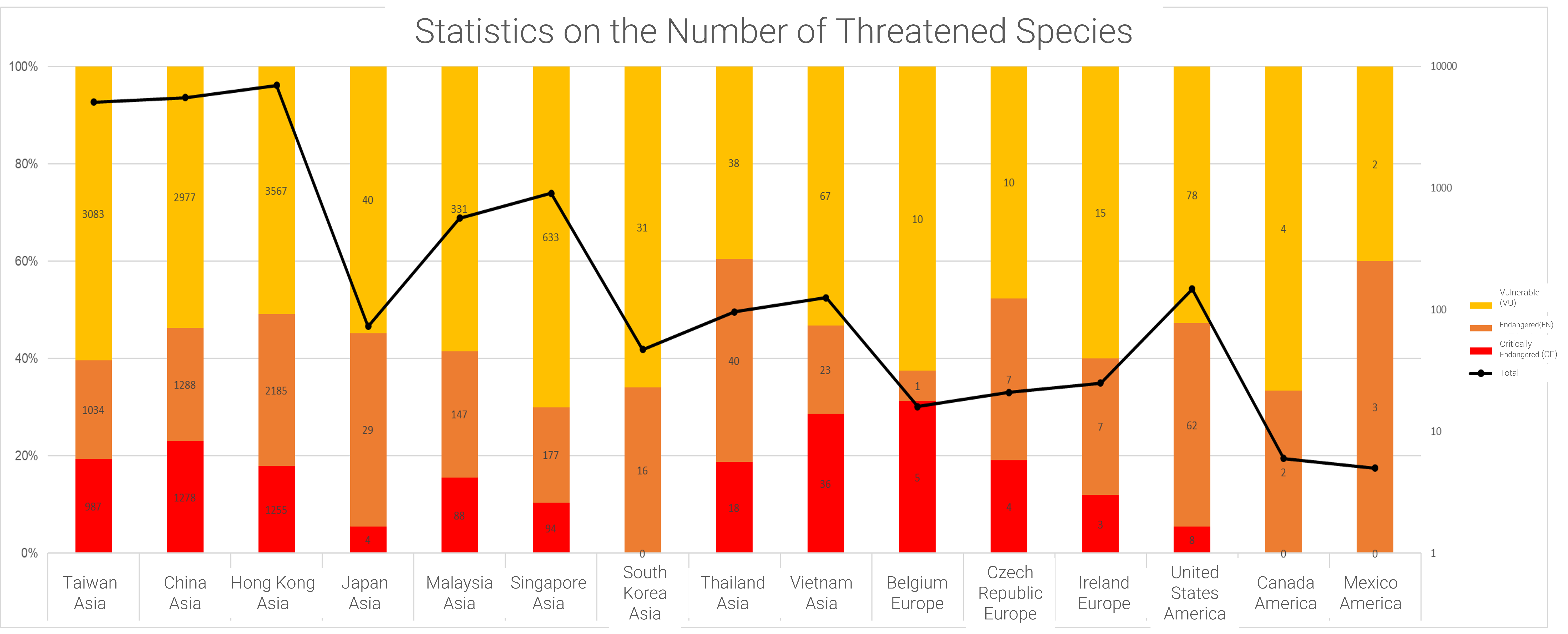 ◎ Only statistical categories of impact are listed.
◎ Only statistical categories of impact are listed.◎ The highest number of impacted threatened species at sites are in Hong Kong (7,007), China (5,543), and Taiwan (5,104).
◎ The highest proportion of sites impacting critically endangered (CR) species are in Belgium (31.3%), Vietnam (28.6%), and China (23.1%).

